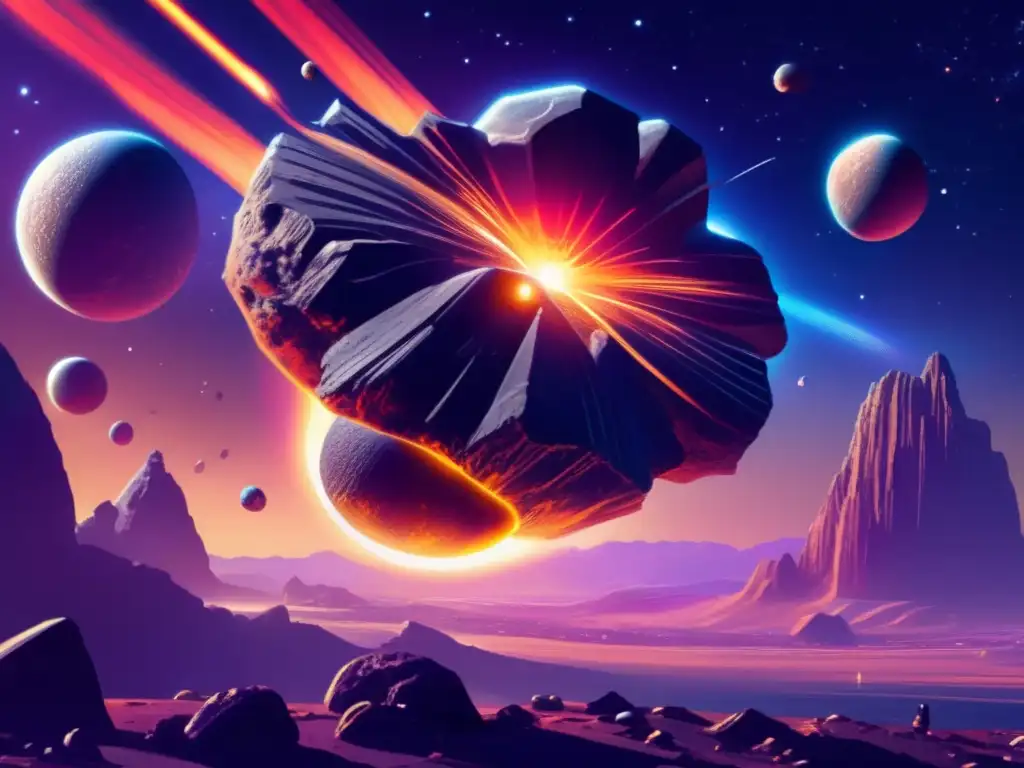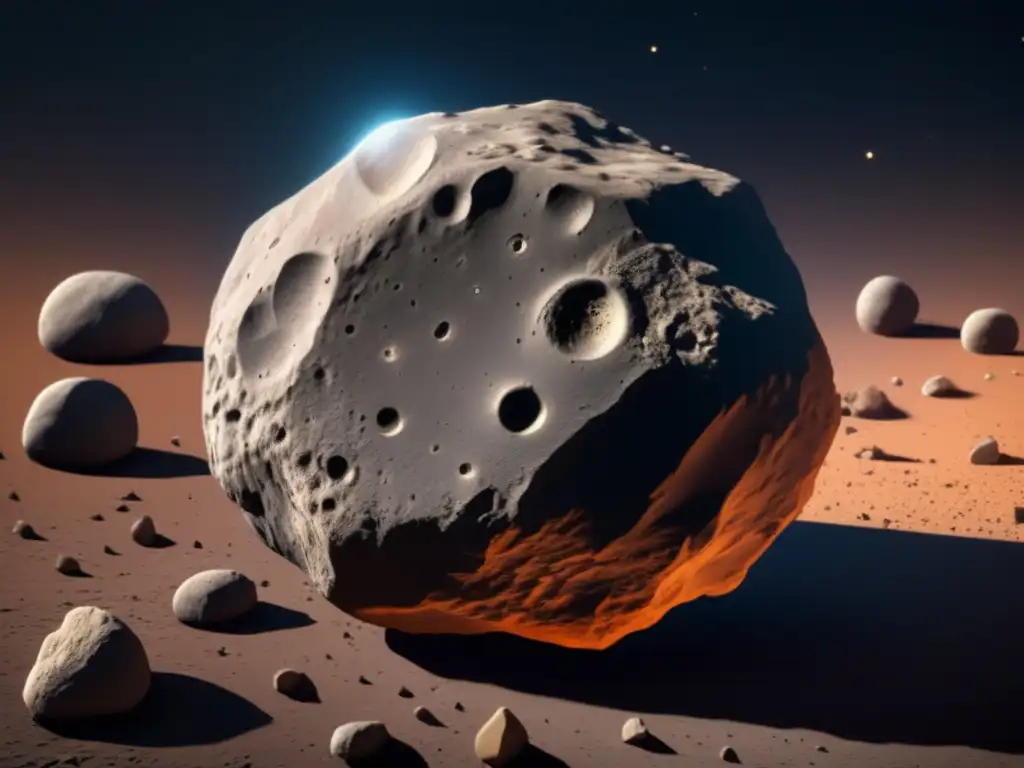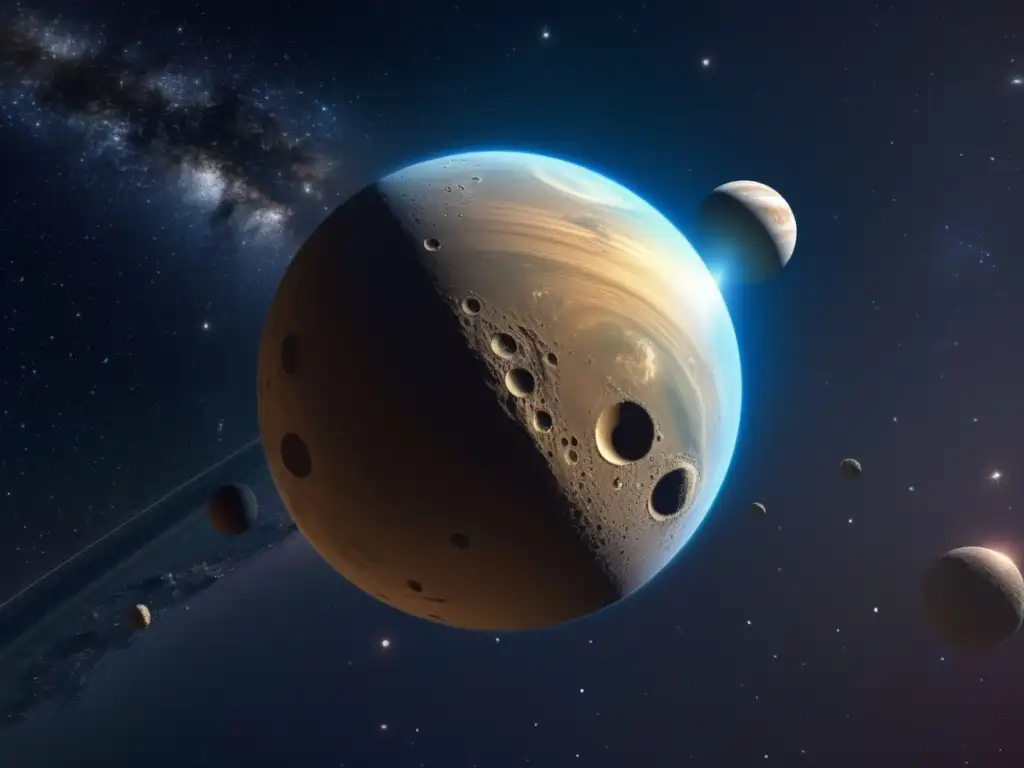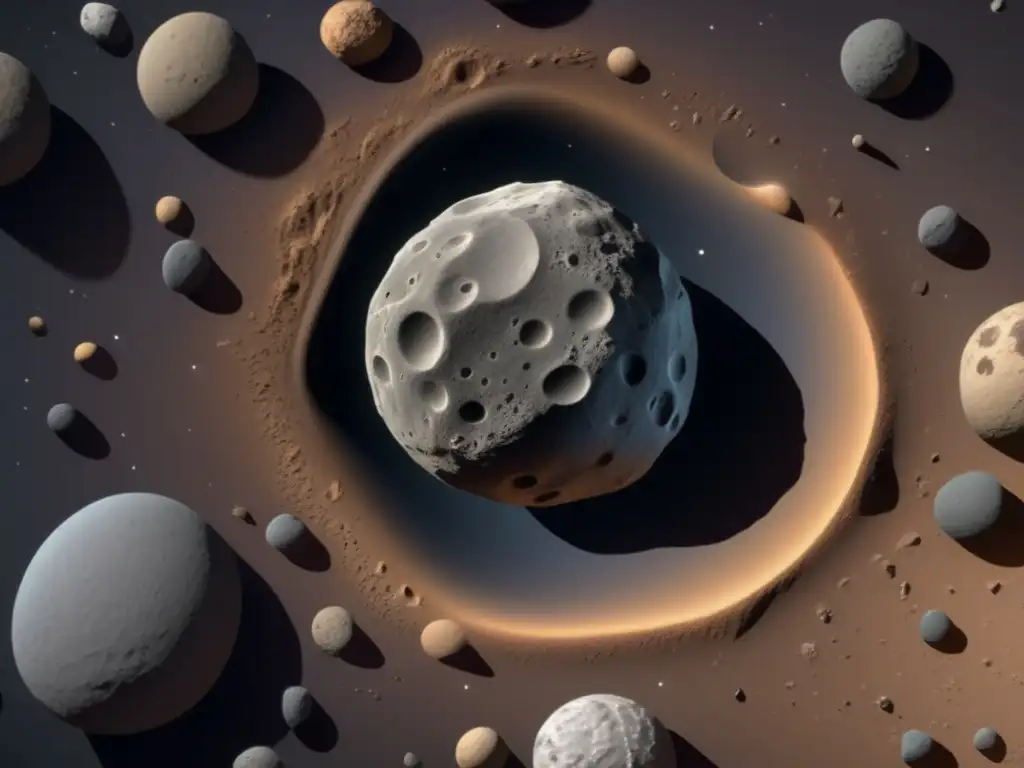A Detailed Study Of Asteroid Erato

Introduction
Welcome to Asteroid Realm's comprehensive guide on asteroid profiles. In this article, we will delve deep into the fascinating world of asteroid Erato, exploring its origins, composition, and significance in the cosmos.
Origin and Discovery

Astronomical Classification
Asteroid Erato belongs to the Apollo group of asteroids, which are Earth-crossing asteroids that have the potential to impact our planet. It was first observed by astronomers at the Palomar Observatory in California on June 7, 1980.
Named after Muse of Love Poetry
Erato is named after the Greek muse of love poetry. The naming of asteroids after figures from mythology is a common practice and reflects the cultural significance of these celestial objects.
Physical Characteristics
Erato has an estimated diameter of approximately 1.2 kilometers (0.75 miles) and a rotation period of about 6 hours. Its surface is believed to be composed primarily of silicate minerals and carbonaceous materials.
Composition and Structure

Spectral Analysis
Spectral analysis of Erato reveals it to be a primitive C-type asteroid. This classification indicates a carbon-rich composition, similar to the carbonaceous chondrite meteorites found on Earth.
Mineralogical Studies
Studies conducted on meteorites related to C-type asteroids suggest that Erato may contain minerals such as olivine, pyroxene, and hydrated silicates. These minerals provide valuable insights into the early formation of our solar system.
Internal Structure
The internal structure of Erato is still largely unknown. However, it is believed to have a differentiated core, mantle, and crust, similar to larger celestial bodies like planets.
Cultural Significance

Ancient Mythology
In Greek mythology, Erato was one of the nine muses, daughters of Zeus and Mnemosyne. She was known as the muse of love poetry and often depicted with a lyre, inspiring poets to create works of romantic beauty.
Symbolic Representation
Erato's association with love poetry and artistic inspiration has made it a symbolic representation of creativity and passion. Many artists and writers draw inspiration from these celestial objects, using them as metaphors in their work.
Scientific Exploration
Asteroids like Erato provide scientists with valuable opportunities for scientific exploration and understanding of our solar system's history. Missions such as the NASA-led OSIRIS-REx and JAXA's Hayabusa2 aim to study asteroids up close, including their composition and potential resources.
Frequently Asked Questions

-
What is the size of asteroid Erato?
Asteroid Erato has an estimated diameter of approximately 1.2 kilometers (0.75 miles).
-
What is the composition of asteroid Erato?
Asteroid Erato is a primitive C-type asteroid, containing carbonaceous materials and silicate minerals.
-
Why is asteroid Erato named after a muse?
Asteroids are often named after figures from mythology, and Erato is named after the Greek muse of love poetry.
-
What is the significance of studying asteroids like Erato?
Studying asteroids provides valuable insights into the early formation of our solar system and potential resources for future space exploration.
-
Are there any missions planned to study asteroid Erato?
At present, there are no specific missions planned to study asteroid Erato.
Conclusion
Asteroid Erato offers a glimpse into the captivating world of celestial objects. Its composition, cultural significance, and scientific exploration potential make it an intriguing subject of study. As we continue to unravel the mysteries of our universe, asteroids like Erato hold valuable clues to our cosmic origins. Thank you for joining us on this detailed journey through the realm of asteroid profiles.
We encourage you to share your thoughts and feedback in the comments section and engage with Asteroid Realm further. Consider subscribing to stay updated on the latest discoveries and sharing this article on social networks to spread the wonders of the cosmos. Your participation is vital in nurturing our curiosity and expanding our knowledge of the universe.
Additional Resources

For those interested in delving deeper into the topic of asteroids and their significance, here are some additional resources:
- NASA's Asteroid Exploration Program
- NASA's Near-Earth Object Program
- International Astronomical Union (IAU)
- Natural History Museum - Asteroids Facts
 What We Know About Asteroid Psyche
What We Know About Asteroid Psyche Understanding The Composition Of Asteroid Niobe
Understanding The Composition Of Asteroid Niobe A Deep Dive Into Asteroid Eos
A Deep Dive Into Asteroid EosIf you want to discover more articles similar to A Detailed Study Of Asteroid Erato, you can visit the Asteroid Profiles category.
Leave a Reply

Articulos relacionados: